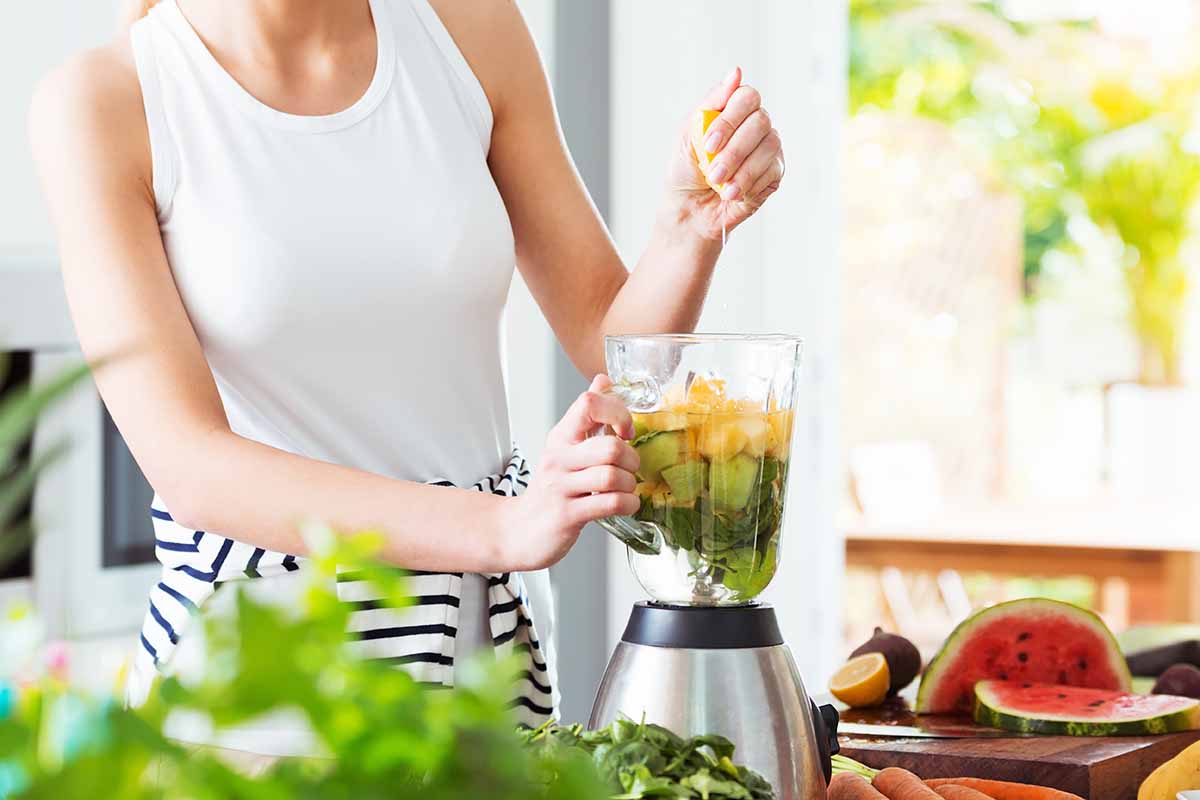When it comes to the most effective use of your electric pressure cooker, nothing beats using it to cook up a batch of your favorite root vegetables.
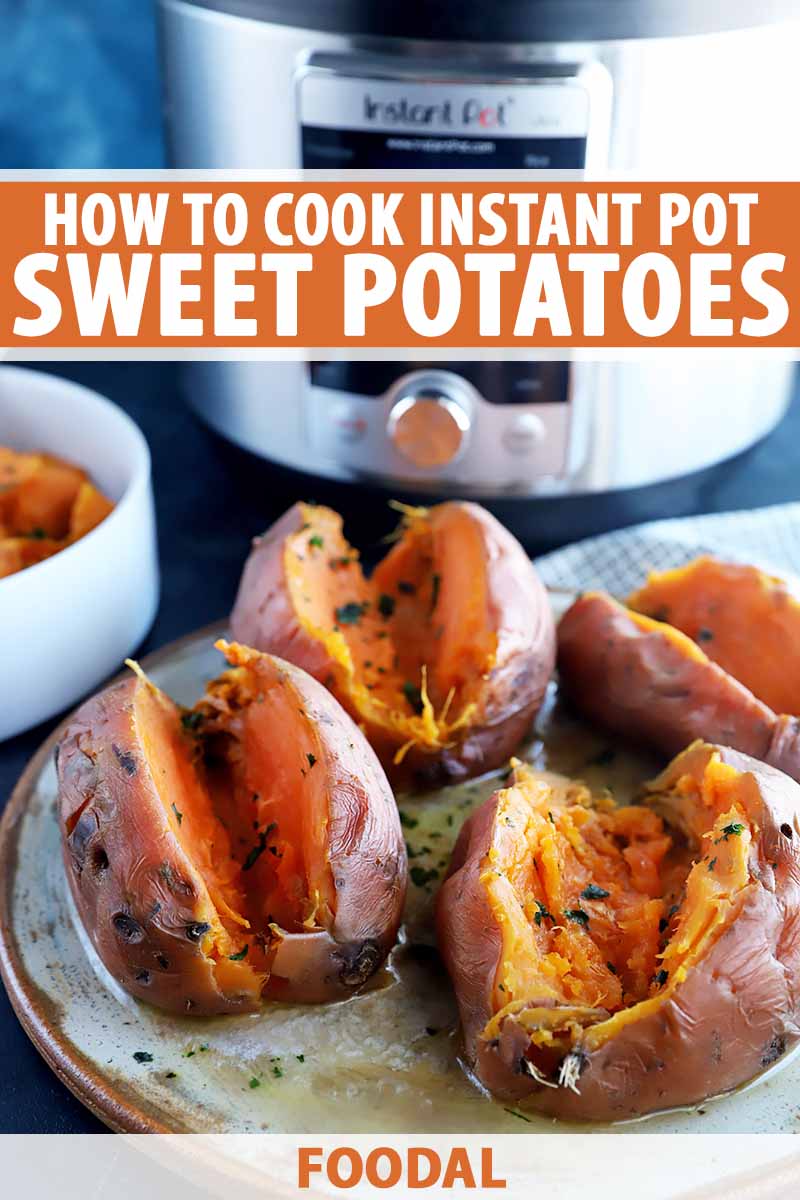
My husband and I are big fans of spuds, whether they are regular ones or sweet potatoes. This particular root vegetable is my husband’s favorite, so I like to find ways to incorporate it into our meals during the week just to put a smile on his face.
It doesn’t matter if you like to serve them whole with a bit of butter on top, or if you like to cube them up. This quick side makes the perfect partner for whatever entree you’re cooking.
Putting my Instant Pot to work makes them even easier to prepare. They come out irresistibly tender and creamy, and cooking them in my countertop appliance using this method takes so much less time than baking them in the oven.
My number one tip if you are making these whole is to start with similarly-sized spuds. This guarantees that the vegetables will come out evenly cooked, because their size determines the required cooking time.
Of course, if you are serving them up peeled and in cubed form, you don’t need to worry about them being the same size. Just chop them up uniformly instead.
Make the most of your favorite root veggie side dish with this super simple countertop method. Here’s everything we’ll cover:
What You’ll Learn
Serving Suggestions
You can do whatever you would like with these. Take your time reviewing our roundup of Foodal’s best sweet potato recipes for creative inspiration.
For my own personal favorites, here are some of my tried-and-true serving ideas.
Whole
Serve them as a side dish with your favorite main protein.
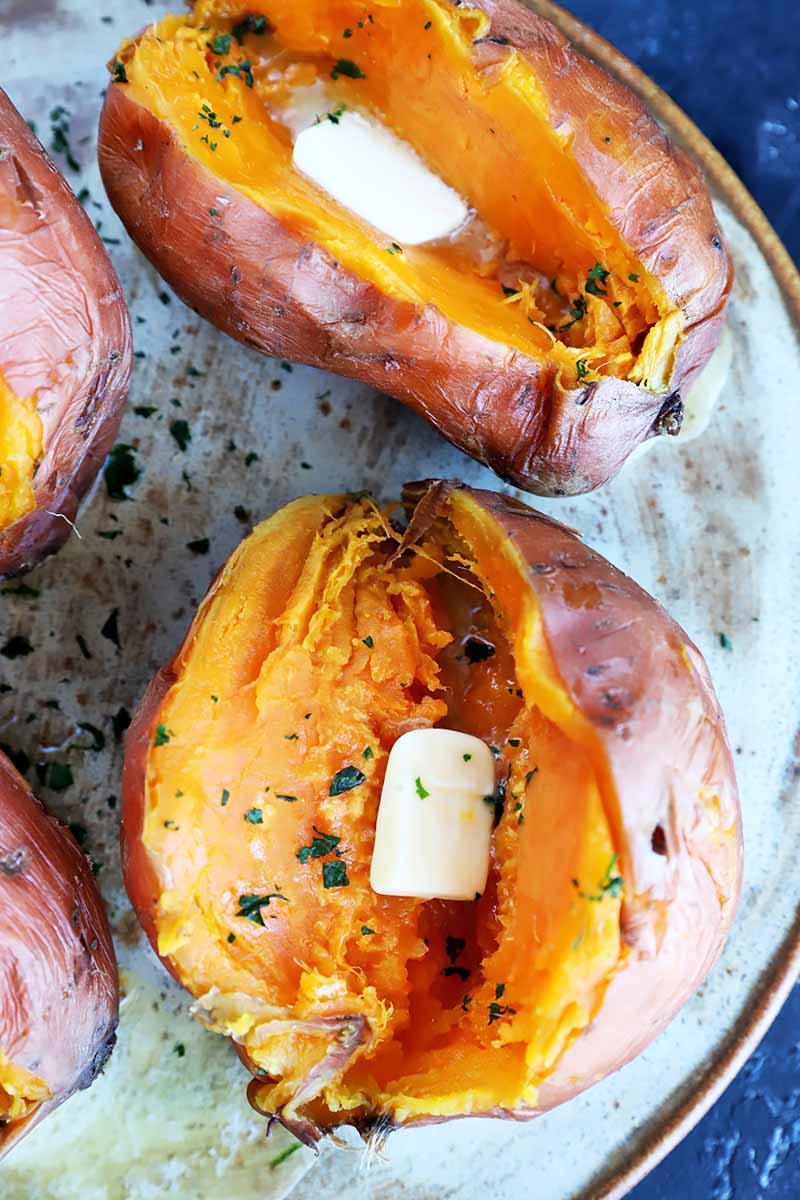
Stuff them! You can make a whole meal out of one of these stuffed with chicken, steak, pork, or tofu and your favorite vegetables.
Cut them in half and top them with marshmallows, then broil for a minute or so until they are melted and browned.
Freeze the cooked whole spuds for freezer meal prep. It’s so much easier to have them already tender and ready to go for lunches and dinners.
Peeled and Cubed
Have fun seasoning these however you would like.
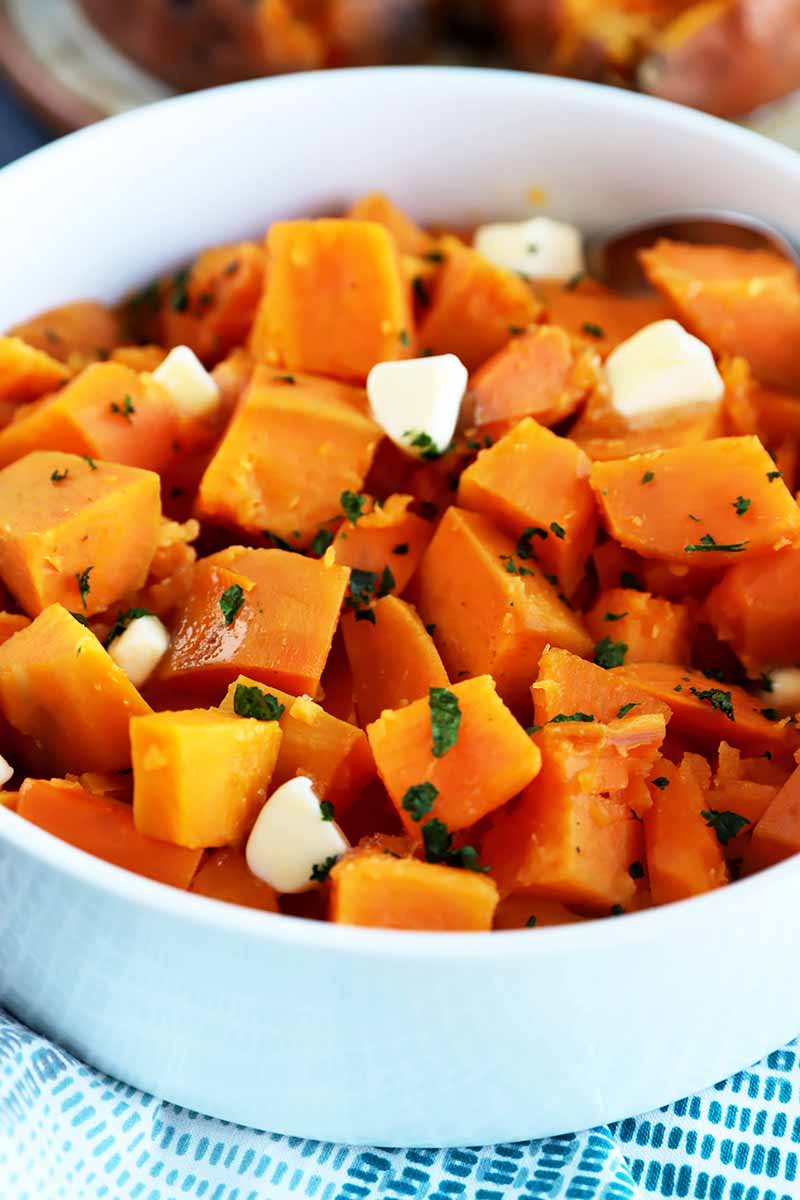
There’s nothing wrong with using just salt and freshly ground black pepper, but I like to get creative with my steamed sweet potatoes and use spices that go with whatever main dish I’m serving.
A hands-down favorite in our home is to toss them with butter, brown sugar, chopped fresh sage, and warming spices like ground cinnamon and allspice.
Mash them up with butter and whole milk or heavy cream to make them delightfully smooth.
Use them for weekly lunch prep as a side like a savory hash with herbs, peppers, and onions to go with a protein and other vegetables.
You can also freeze them once cooked if desired.
To find more details on freezing the cooked vegetables either whole or cubed, check out my tips at the end of this article.
How to Cook Sweet Potatoes in the Electric Pressure Cooker
Learning how to make this vegetable in the electric pressure cooker will not only result in perfectly tender root vegetables every time, but it will also cut the kitchen time down significantly for you.
For Whole Sweet Potatoes
Step 1 – Measure Ingredients and Prep
To begin, you will need:
- 4 sweet potatoes, scrubbed
- 1 cup water
Measure out the ingredients as listed. Be sure to weigh the spuds before you start, to determine the cooking time, as described below.
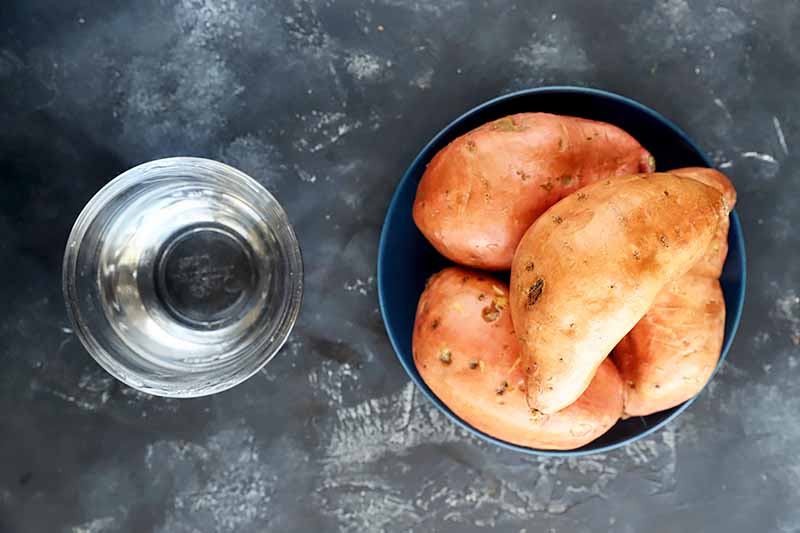
Tip: when selecting your vegetables, make sure they are all around the same size.
Scrub them clean with a vegetable brush.
Pierce the potatoes all over with a fork, about 7 to 10 times. Set aside.
Step 2 – Pressure Cook
Add water to the bottom of the appliance and place the trivet (or steamer basket) inside. Place the vegetables on the trivet.

Set to Manual and cook on High pressure, with your timer set based on the weight of each potato. Note that the largest size may not fit in smaller appliances.
The recommended cook times are as follows:
- Small (6 to 8 ounces per sweet potato, 24 to 32 ounces total weight) = 12 minutes High pressure
- Medium (8 to 12 ounces per sweet potato, 32 ounces to 48 ounces total weight) = 18 minutes High pressure
- Large (12 to 16 ounces per sweet potato, 48 ounces to 64 ounces total weight) = 25 minutes High pressure
Let the pressure naturally release for 10 minutes. Manually release any remaining steam. Serve immediately.
Any leftovers can be refrigerated in an airtight container for up to 4 days.
For Cubed Sweet Potatoes
Step 1 – Peel, Chop, and Measure Remaining Ingredients
To cook your root veggies in this style, you will need:
- 6 medium sweet potatoes
- 1 cup water
Weigh your potatoes when you buy them, or before you start cooking. For this method you will need about 2 1/2 to 3 pounds total weight.
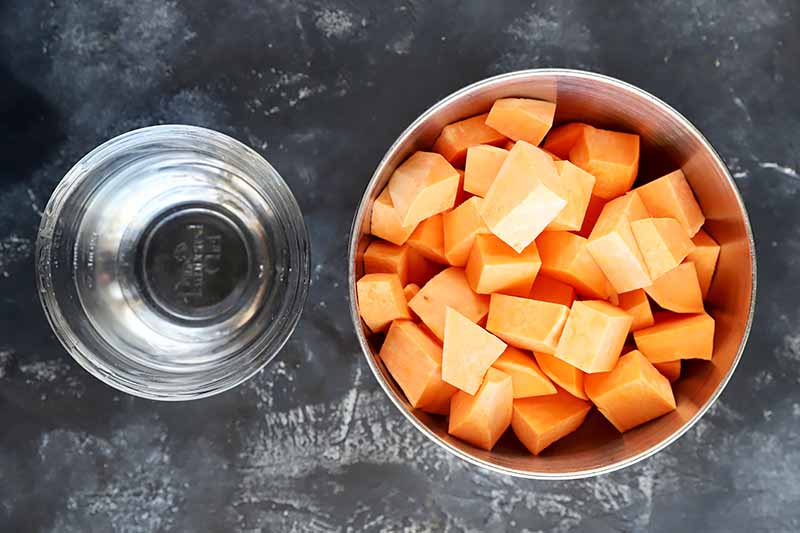
Scrub them well, with a veggie brush.
Get out your vegetable peeler, a sharp knife, and a sturdy cutting board. Peel and cut the sweet potatoes into 1 1/2 to 2-inch cubes.
Try to cut them to a uniform size, for the most even cooking. You should have approximately 7 1/2 to 8 cups chopped.
Measure out one cup of water.
Step 2 – Pressure Cook
Add the water to the bottom of the appliance insert. Top with the trivet or steamer basket, and pile the cubes on top.
Set to Manual and cook on High pressure for 3 minutes. Manually release the pressure.
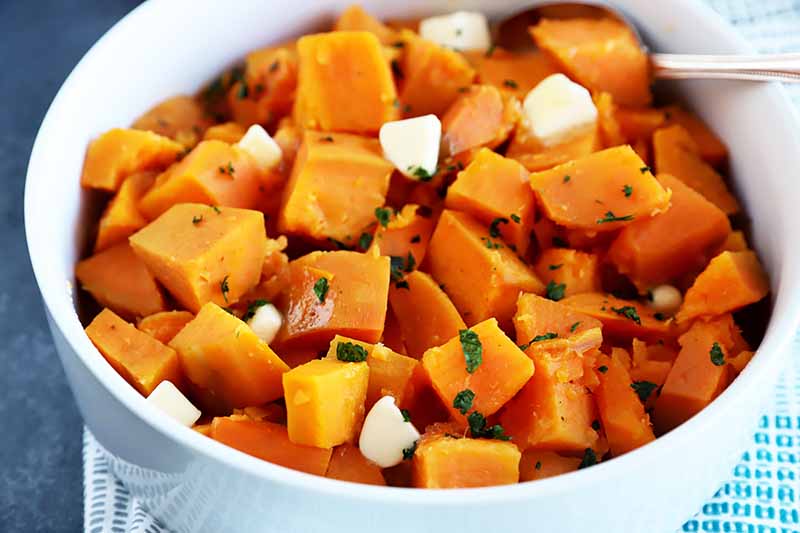
Season with salt and pepper to taste, or your choice of seasonings.
Any leftovers can be refrigerated in an airtight container for up to 4 days.
Can Cooked Sweet Potatoes Be Frozen?
Are you thinking about making these for freezer meal prep? Or do you have a lot of leftovers that you don’t think you’ll be able to use up within a couple of days? No problem!
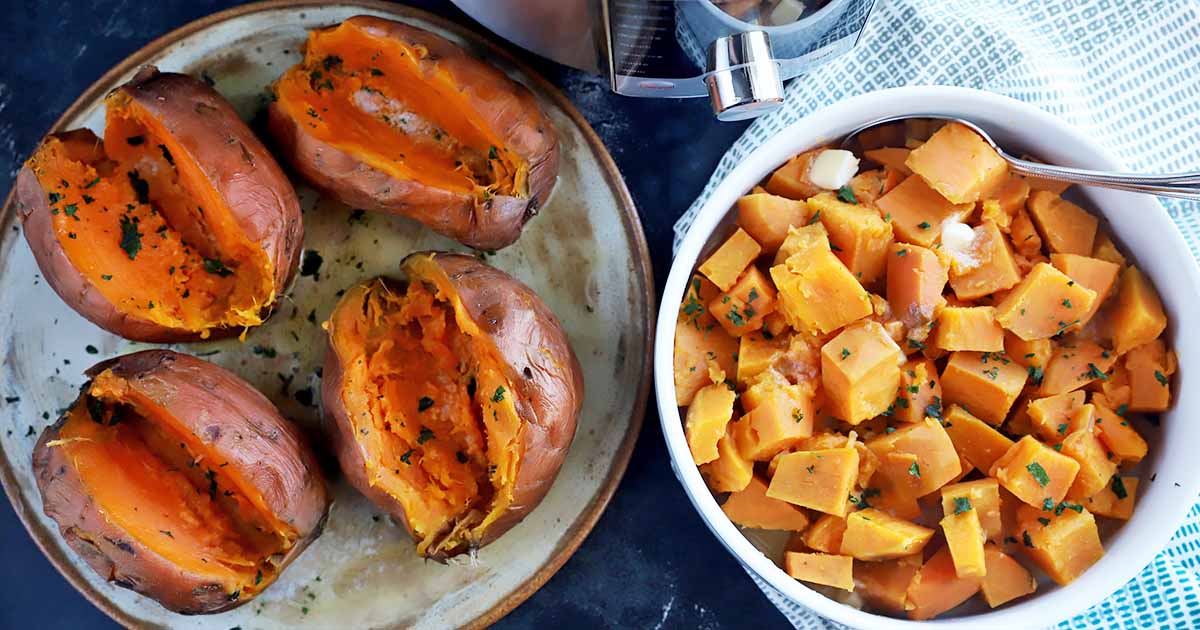
Personally, I love to cook up the whole spuds and freeze them to use as a side, or as a base for my favorite shredded meats and vegetables whenever the mood strikes.
Leftovers can be frozen, but the freezing prep depends on how they are prepared.
For whole potatoes, let them cool completely. Wrap each in plastic wrap, and place in freezer-safe bags. They can be stored in the freezer for up to three months.
For chopped, be sure to cool them completely, and pat them dry with paper towels before adding them to a resealable freezer-safe bag. Patting them dry will help to avoid freezer burn.
Squeeze all of the air out of the bag and seal it. Store for up to three months in the freezer.
To thaw either type, place them in the refrigerator overnight before reheating and serving.
For more ways to cook vegetables in a fraction of the time, and without turning on your stove or oven, check out the following how-to’s from Foodal:
Do you like to enjoy your sweet potatoes whole, or chopped into bite-sized pieces? Tell us in the comments below, and share your serving suggestions.
Photos by Meghan Yager, © Ask the Experts, LLC. ALL RIGHTS RESERVED. See our TOS for more details.
About Meghan Yager
Meghan Yager is a food addict turned food and travel writer with a love for creating uncomplicated, gourmet recipes and devouring anything the world serves up. As the author of the food and travel blog Cake 'n Knife, Meghan focuses on unique foodie experiences from around the world to right at home in your own kitchen.



